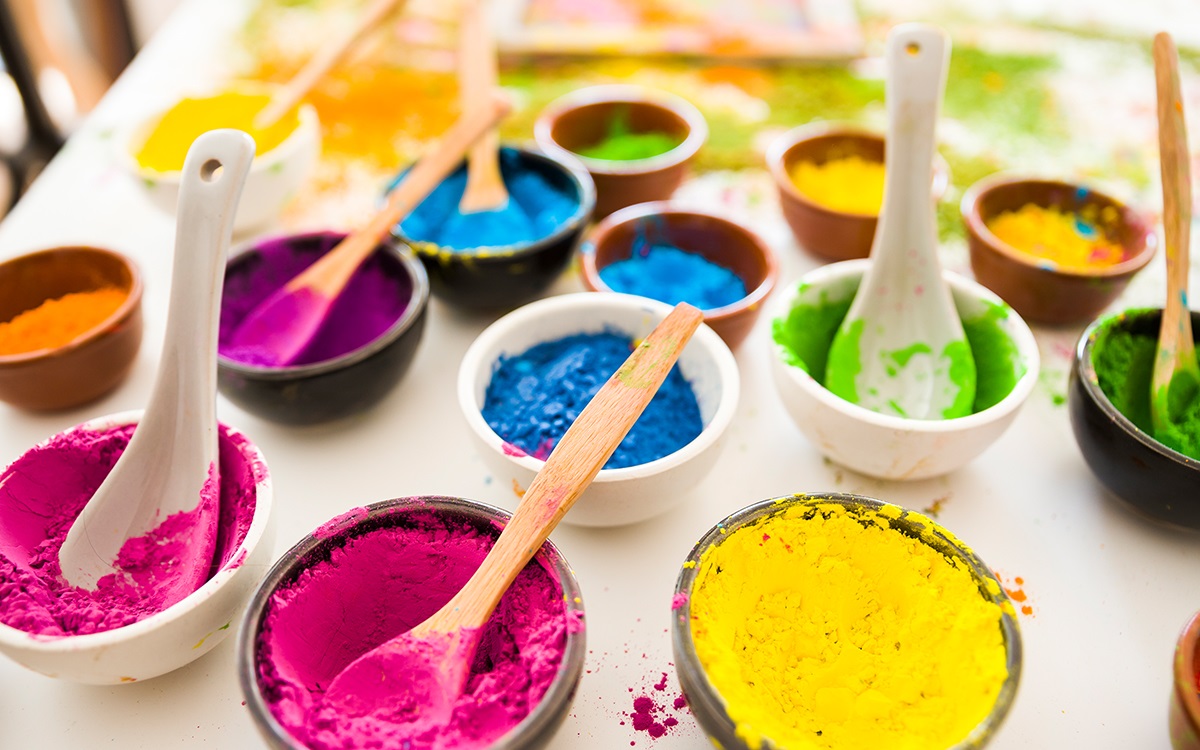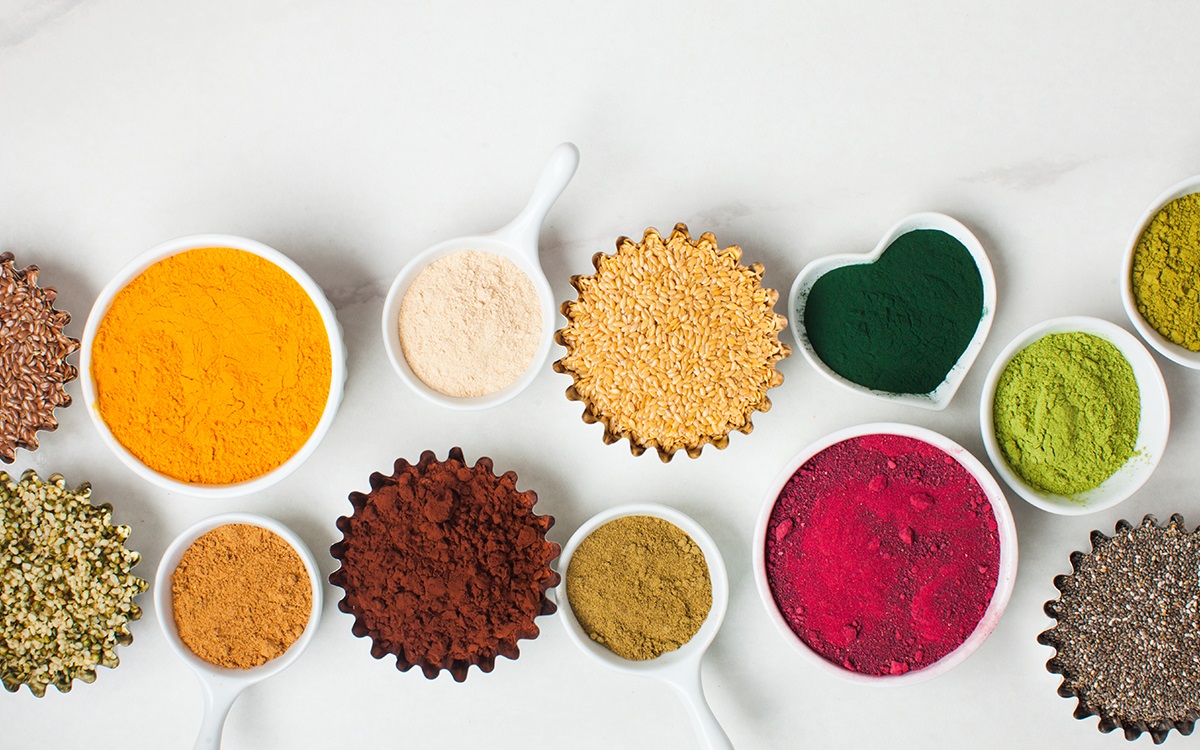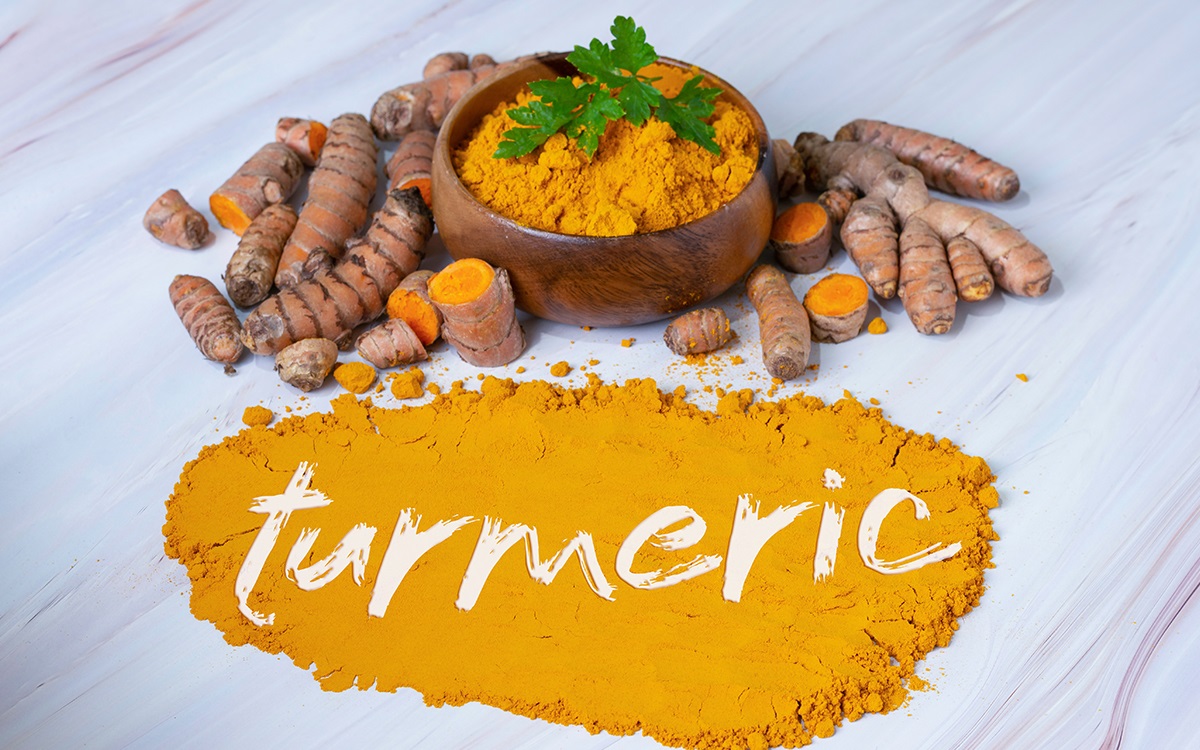Holi, also known as the “Festival of Colours,” is a lively Hindu celebration that symbolises the arrival of spring. It is celebrated with tremendous passion throughout India and the world. Celebrating Holi with organic and natural colors is an excellent way to celebrate both tradition and the environment. Organic colors are made from natural ingredients like flowers, turmeric, and other plant-based components, making them both safe for the skin and environmentally friendly. Overall, incorporating organic and natural hues adds a wonderful dimension to the Holi festival, enriching the experience for those involved while also encouraging environmental awareness and sustainability.

What is the natural color?
Color agents derived from natural sources can be categorized into plant-based, animal-based, and insect-based. These natural colorants and dyes for various applications, including food coloring, cosmetics, textiles, and art.
Examples of Natural color is given below
- Chlorophyll: Gives green color and is found in plants.
- Anthocyanins: Responsible for red, purple, and blue colors found in various fruits and vegetables like berries, grapes, and red cabbage.
- Turmeric (Curcumin): Provides a vibrant yellow color derived from the turmeric root.
- Annatto (Bixin and Norbixin): Obtained from the seeds of the achiote tree, it gives shades of yellow to orange.
- Beetroot (Betanin): Imparts a deep red color extracted from beetroot.
- Saffron (Crocin): Yields a bright orange-yellow color derived from the saffron crocus flower.
- Spinach (Chlorophyllin): A green colorant extracted from spinach leaves.
- Cochineal (Carmine): Obtained from the crushed bodies of the cochineal insect, it provides a vivid red color.
- Shellac (Lac): Derived from the resinous secretions of the lac insect, used for various shades from orange to brown.
- Gamboge: A yellow pigment obtained from the sap of certain Southeast Asian trees.
- Carmine (Cochineal Extract): Produced from the cochineal insect, it yields a rich red color.

What are the synthetic colors and harmful effects?
Synthetic colours, often known as artificial colours, are chemical compounds used to enhance the appearance of foods, cosmetics, and other products. Synthetic hues include tartrazine, allura red, brilliant blue, brilliant black, and erythrosine. These colours are the result of chemical processes, not natural sources. While they can make things look better, they can also cause allergic responses, hyperactivity, cancer, toxicity, and other serious health problems.
How to make gulal at home for this Holi festival
Due to their high cost and scarcity, all-natural hues are difficult to use to produce gulal. Natural colors for manufacturing gulal for the Holi festival can be derived from a variety of plants and spices. Here are some regularly used natural elements for creating various shades of gulal.

- Red: Beetroot can be used to achieve a rich red colour. It is peeled, sliced and mashed into a slurry before being combined with maize flour and dried.
- Yellow: Turmeric powder is combined with gram flour to produce a vivid yellow gulal.
- Green: To obtain a green shade, use henna or mehendi powder, or treat spinach in the same manner you would beetroot.
- Blue: Indigo, obtained from the indigo plant, can be used to create a blue colour.
- Pink: Flowers such as roses can be dried and powdered to make pink gulal.
- Orange: Saffron or orange marigold flowers can be used for an orange color. Butea monosperma is also used to create an orange liquid colour by soaking dry flowers in hot water, which is ideal for natural and safe Holi celebrations
Make sure your Gulal free from synthetic color or any harmful color agent
Because of the great demand for organic and natural colour gulal, prices in the market are high, resulting in a variety of faulty and adulterated gulal products that necessitate laboratory testing to assure the quality and authenticity of all gulal and Holi colouring agents. Cultivator Phyto Lab is a world-class testing facility that conducts quality control tests in compliance with national and international regulations.

Authors

Dr. Sanjoy Gupta (Ph.D)
Senior Officer- Training and Capacity Building
Dr. Sanjoy Gupta is a seasoned researcher with 13 years of experience across plant biotechnology, health science, nutrition, phytoplankton, and botanical studies. He has conducted research at reputed institutions like CSIR IIP, BSI, NIOT, and Cultivator Natural Products. With over a dozen published articles in national/international journals and thoughtful blog contributions, Dr. Gupta’s multidisciplinary expertise advances knowledge in holistic wellness and scientific innovation.

Kumar Nitesh
FSSAI Approved Food Analyst | Sr. Manager - Technical Chemical Lab
Kumar Nitesh is a seasoned Food Analyst with over 10 years of expertise in method development, validation, and analytical testing across diverse parameters like pesticides, mycotoxins, plant actives, and contaminants. Proficient in advanced instrumentation like LC-MS/MS, GC-MS/MS, and ICP-MS, he has held pivotal roles at reputed organizations. Notably, Kumar Nitesh has been successfully faced as an auditee of different regulatory like EIC, NABL, FSSAI, APEDA, and AYUSH, along with excelling in over 100 national and international proficiency tests. Beyond his analytical pursuits, he contributes to scientific blogs, driving advancements in analytical chemistry and instrumentation.
Reference :
- https://en.wikipedia.org/wiki/Natural_Color_System
- https://www.ncbi.nlm.nih.gov/pmc/articles/PMC8634323/
- https://pharmacy.dypvp.edu.in/pharmaceutical-resonance/downloads/original-research-articles/Volume2-Issue2/0004-Manuscript.pdf
- https://www.annualreviews.org/content/journals/10.1146/annurev-food-030216-025923
- https://www.ncbi.nlm.nih.gov/pmc/articles/PMC2957945/
- https://ehjournal.biomedcentral.com/articles/10.1186/s12940-022-00849-9

